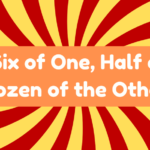The phrase "a dime a dozen" refers to items that are very common and lack uniqueness, leading to a perception of diminished value. Originating in American vernacular, it reflects the idea of inexpensive goods available in abundance. This expression emphasizes societal concerns about market saturation and the prevalence of low-quality options. For example, generic products or fast fashion illustrate this concept well. Understanding its usage can inform better choices in a world filled with overwhelming options. A deeper insight awaits.
Synonyms
When exploring alternatives to the phrase "a dime a dozen," one can find several synonyms that convey similar meanings of abundance and minimal value. These phrase variations illustrate how common items can saturate the market, greatly diminishing their perceived worth. By examining these options, individuals can express their skepticism regarding oversaturation in various fields.
- Plentiful and cheap
- Ten a penny
- Common as dirt
- Easy to find
Using these alternatives enriches discussions, revealing a critical view of a market filled with low-quality offerings, while encouraging innovative thinking about value and uniqueness.
Example of Sentences
The market is saturated with items that lack distinctiveness, leading to the expression "a dime a dozen." This phrase aptly captures the idea that certain products, like low-quality electronics or generic food options, are so widely available that their value diminishes markedly. Several examples illuminate this concept:
- Reality TV shows have become a dime a dozen.
- Generic medications may be common items, but efficacy varies greatly.
- Online courses are a dime a dozen, yet few offer real value.
- Fast fashion brands flood the market, with originality being rare.
The cultural implications of this phrase prompt reflection on consumer choices and authenticity.
Origin
Originating from American coinage, the term "a dime a dozen" reflects a time when goods could be acquired cheaply and in bulk. The dime, introduced in 1796, was valued at ten cents, often representing inexpensive items. In the 1800s, this phrase initially referenced items costing a dime for twelve, emphasizing affordability. Over time, particularly from the early 1900s, its meaning evolved to signify something common and lacking in uniqueness. This shift in usage mirrors society's perspective on value, highlighting a growing skepticism towards the quality of abundant goods prevalent in contemporary markets, ultimately prompting a call for innovation amid sameness.
Collocations
Collocations related to the phrase "a dime a dozen" reveal how language captures societal attitudes toward abundance and value. These expressions illustrate the prevalence of common items in consumer trends, often critiquing their diminished worth. Such collocations can highlight concerns about oversaturation and quality in modern markets.
- Low-paying jobs
- Generic products
- Outdated technology
- Abundant choices
How to Use in Everyday Language
Using the phrase "a dime a dozen" in everyday conversation can effectively convey a sense of skepticism towards the abundance and low quality of certain items or opportunities. This expression often highlights common trends that may not merit a favorable value assessment.
| Context | Example Usage |
|---|---|
| Consumer Goods | "Cheap gadgets are a dime a dozen." |
| Job Market | "Entry-level positions are a dime a dozen." |
| Online Content | "Health blogs are a dime a dozen these days." |
Why Is It Still Relevant Today?
While society continues to advance technologically and culturally, the phrase "a dime a dozen" remains relevant, reflecting an undeniable truth about the abundance of low-quality options in various markets. As cultural perceptions shift, today's consumers must navigate through market saturation, where countless products and services compete for attention. This scenario often leads to confusion, as many offerings possess minimal value. The phrase serves as a reminder to be discerning amidst overwhelming choices, highlighting the difficulty of finding uniqueness in a landscape filled with similarities. Ultimately, it challenges individuals to evaluate quality over quantity in their daily decisions.







